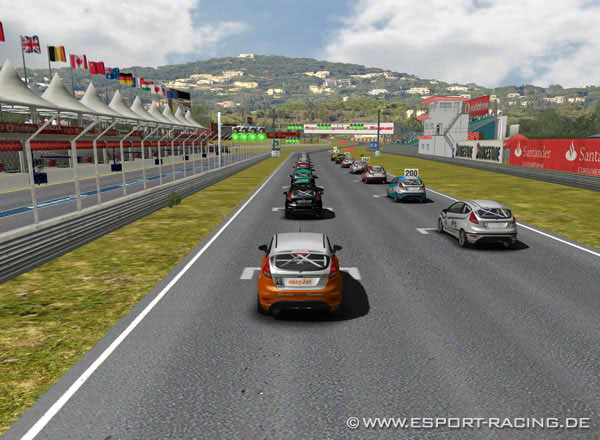

- #HOW TO ADD TEXTURES TO RFACTOR IN 3DSIMED ZIP FILE#
- #HOW TO ADD TEXTURES TO RFACTOR IN 3DSIMED ARCHIVE#
- #HOW TO ADD TEXTURES TO RFACTOR IN 3DSIMED ZIP#
You might want to convert some of the mts to gmt at one time. If the track contains a lot of mts file 3dsimed has problems handling a large number of files at once. Make careful note of loading errors and try to locate the missing file.

Most tracks will have a missing graphic file or a gmt error. Some tracks work perfectly the first try. There are 4 SKYXX.dds 00, 01, 03 and 04 files which also must be extracted.Īlso find BAK2.DDS, BKA.DDS, BAKA.DDS, BAKB.DDS and BAKC.DDS files and copy them to the same folder as the mas files.Ĭopy the track to the rFactor\Locations folder and try it. Using a bulk text editor (Notepad or Editpad Lite is a good freeware program), open the new scn file.Ĭheck to see if all spelling is correct and in the right place.įrom a working rFactor track extract the sky.gmt and skyboxi.gmt files and put them with the mas files. Locate the gmt folder and delete output.scn (or _output.scn) then highlight all the items.Ĭlick 'Save As' and enter. Open the MAS.EXE tool from ISI create mas files. If the track appears, it usually means most items were converted correctly. Open 3dsmed again and 'Import As Object(s)' from the track folder. Connect the image texture node to your principled shader and see the result in the 3D viewport. Change the projection from flat to box, and you will also get a blend value to adjust. When asked to rename the files, click 'NO'.ĬOPY (do not move) the files in the gmt folder to the track folder.ĬOPY (do not move) the files in the tex folder to the track folder. To use Box projection, open the shader editor and add an image texture node, browse to an image you want to map to your object. Locate the gmt folder in your working folder.Ĭlick on 'File, Export Textures' and locate the 'tex' folder in the work folder, click 'OK'. Once you have a track appearing in the window click on 'Save as rFactor. If the track does not appear or there is a lot of pink, try another track. Locate the Combine folder and highlight all the objects in the Combine folder.Īfter a few seconds the track should appear in the window. Go to the mapmas folder and copy the contents to the combine folder.Ĭlick on 'File' and then 'Import As Object(s)' Go to the mas folder and copy the contents to the combine folder. When asked where to extract the files locate the mapmas folder in the work folder. Use 3dsimed again and click on 'Tools' and then 'Expand' When asked where to extract the file locate the mas folder in the above work folder.

Using 3dsimed click on 'Tools' and then 'Expand' That will let you know why a car is omitted from the menu. As for a car not showing up, make sure you have the game writing a trace file. Mas, mapmas, combine, gmt, tex, track, and rFact Gauge textures are usually in the cpit.gtr file for the car, sometimes in a shared. Inside the work folder create the following folders. Select a F1C track and copy the track to a work folder. URI, such as: file:///other_directory/other_document.This is my own personal tutorial. Relative URI, but it is valid to reference content using an absolute
#HOW TO ADD TEXTURES TO RFACTOR IN 3DSIMED ARCHIVE#
It is not possible to reference content outside of an archive using a GTR and, at present, always attempts to open the texture maps from the same folder as it opened the. internal_archive.zip/directory/document.dae#element GTR files to the track folder, then 3DSimED will use the texture maps outside the. zae archive, will use the name of the nested archive inįor example. The URI to reference a document inside a nested archive, itself The archive itself may include other archives (zip, rar, kmz, zae). Using relative paths from the root of the archive, in accordance with zae files can reference any other file in the archive If neither of these conditions is met then the element will be the starting point for application loading If the URIĬontains a fragment then the indicated element is the starting pointįor application loading of the. This element is a UTF8Įncoding of the relative URI pointing to a. TheĪrchive must include a file named manifest.xml, an XML-encoded file (COLLADA documents) and all the referenced content (textures).
#HOW TO ADD TEXTURES TO RFACTOR IN 3DSIMED ZIP#
zae format, which is a zip archive of one or several. On import and export, DCC tools must support the. The COLLADA 1.5 spec defines these formally on page 20, repeated here for completion:
#HOW TO ADD TEXTURES TO RFACTOR IN 3DSIMED ZIP FILE#
The zip file is sometimes renamed with an extension. The path to the textures inside the COLLADA file should be relative to the location of the. The way to do this is to put them together into a zip file.


 0 kommentar(er)
0 kommentar(er)
